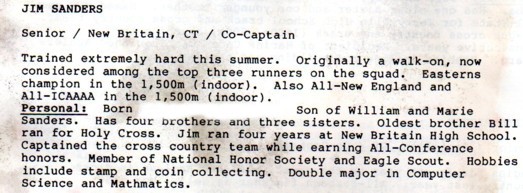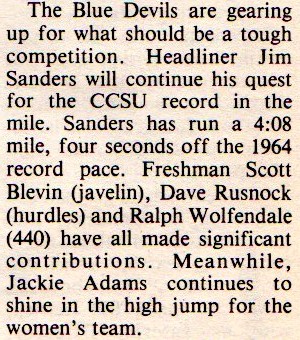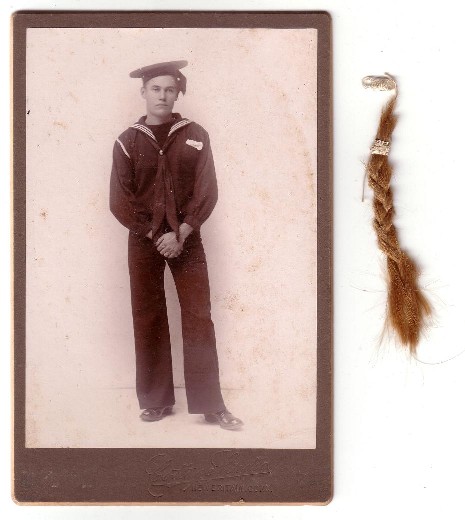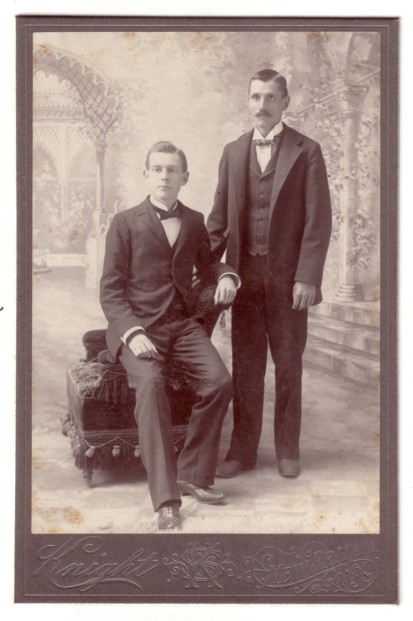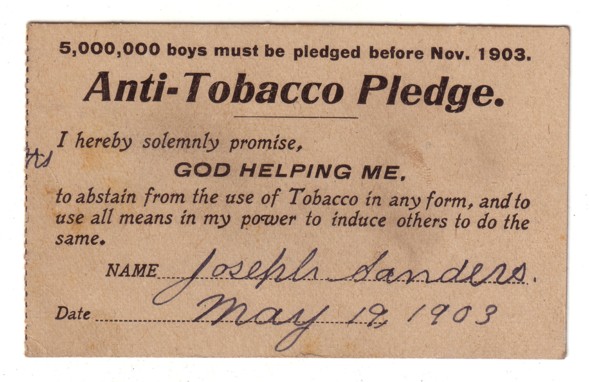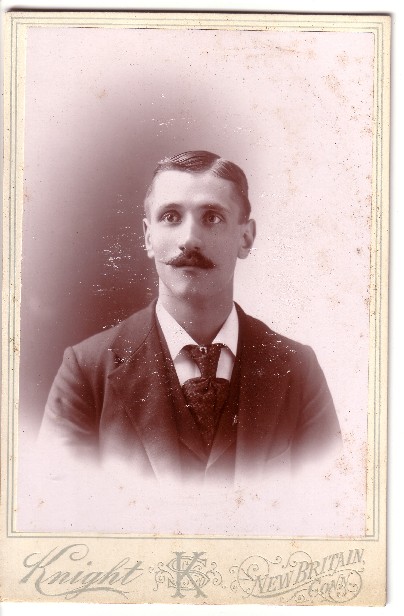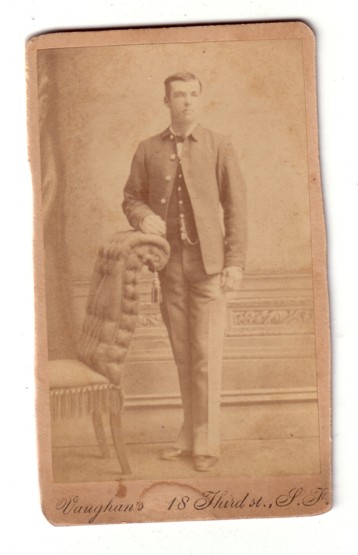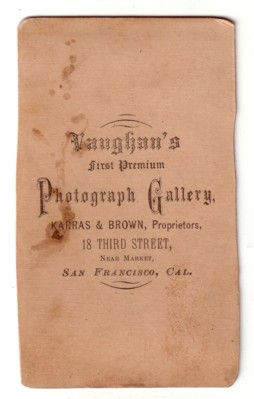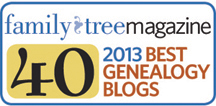Old Photo Identification
Two weeks ago was the first part of the photo genealogy series of posts. The series is about trying to identify photos in a 19th century photo album. This process can be applied to your own photos. This week we will explore in more detail how you can date and identify your old photos. But first, below are a few links to the previous posts.
The first post above provides a good background. It contains family group sheets for three families who are possible subjects of the photos in t he book. We will pick up where the last post left off. The other two posts are pictures which are still unidentified from the photo album.
One thing you must do to identify your pictures is to narrow down the branch of the family which are the likely subjects within the pictures. Were these picturess in a box from your maternal grandmothers items? Is there a family trait that stands out such as big wide ears such as my Sanders had? Luckily for me, the inscription in the photo album clearly identified the branch of the family. It was the Sanders – Fryher side from New Britain, CT. There were various types of pictures in the photo album tin types, carte-de-visite, cabinet cards and more.
The photo identification process will be as much about the process of elimination as it will be about positively identifying the subject. The pictures in the album were taken anywhere from about the 1860s until about the 1930s. Clearly in order to figure out who was in individual pictures I was going to have to try to put a date to each of the pictures. A good way to start this dating process is to determine the type of photograph it was.
The chart below shows some of the common types of photos popular from the beginning of photography up until about the beginning of the 20th century. A brief overview about the photo media type is written and approximately when the media type was popular. For a more in depth discussion, you can refer to one of Maureen Taylor’s books.
Daguerrotypes – from about 1840 – 1860
Daguerrotypes were the first major photographic media which still survives today. They are small metal photographics normally found in a case. They must be held at a particular angle to see the picture.
Ambrotypes – from about 1854 – 1881
Ambrotypes are a glass negative. These are nearly always in a case with a dark background.
Tintypes – from about 1856 – 1930
Tintypes were very popular for a long period of time in part because of it’s durability. Due to the many years this media was used, it sometimes makes it difficult to put a date to it. Tintypes are an image on a thin sheet of metal. Bescause of the process, tin types were printed in reverse.
Albumen prints – from about 1856 – 1900
Albumen prints are a thin paper print mounted on cardboard stock. There is a wide variety of sizes which were produced.
- Carte-de_visite were introduced in about 1859. They are roughly 4 1/4 inches by 2 1/2 inches.
- Cabinet Cards were introduced in about 1866. They are roughly 4 1/2 inches by 6 1/2 inches.
- Victoria Cards were introduced in about 1870. They are roughly 3 1/4 inches by 5 inches.
- Stereo Cards were introduced in about 1859. They are roughly 3 inches by 7 inches.
Most of the pictures in this book were either a Tintype or an Albumen print of various sizes. One of the most helpful characteristics of the Albumem prints was the cardstock they were mounted on. The photographer’s imprint was often printed on this cardstock, sometimes with an address. This helped me identify the baby picture below.
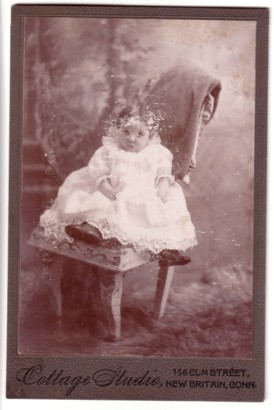
This is almost certainly my Aunt Florence Sanders as a baby. The picture is a cabinet card. It measures 4 1/2 inches by 6 1/2 inches. Notice the photographers imprint. It is Cottage Studios and lists an address. Using the New Britain City Directories I found that Cottage Studios was only at this address between 1896 and 1898. The only child of Joseph and Mary with the right birth date to fit the timeframe is Florence. This is also the only baby picture in the album.
The photographers imprint will be one of the best methods to date a picture. You need to find when the studios were in business. The city or town directories will aid you in this. I had a lot of pictures from the City of New Britain from various Studios. With this in mind, I created a spreadsheet and a timeline when each studio was operating. I kept track of addresses and dates of operations. Using this information it was easy to date the picture and determine who is most likely the subject of the picture.
Another good method to help in identifying your pictures is to compare the features from a known identified picture to some pictures you’re trying to identify. Take the following image. It’s a Civil War Photo of my ancestor Patrick Fraher.
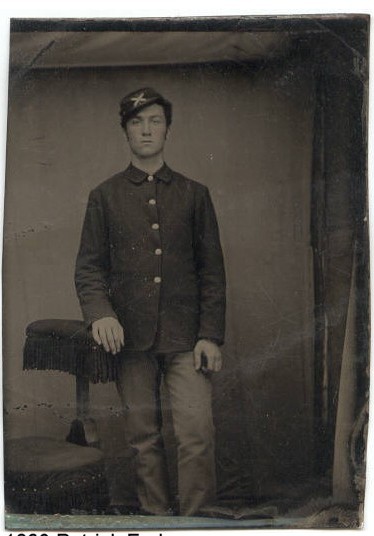
A cousin of mine I met on the internet through a message board. Took the known image above and compared it to the male in the following photo in the image below.
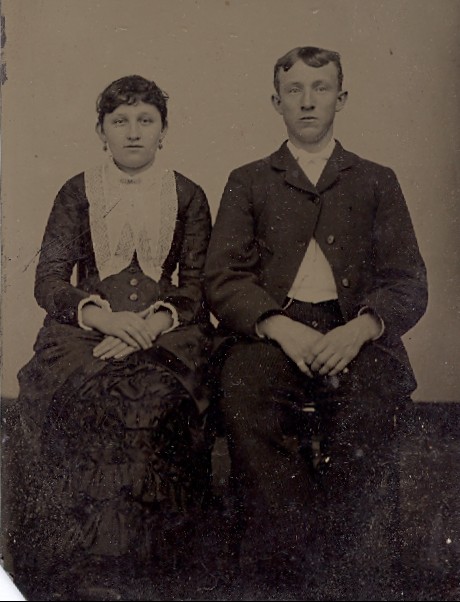
He took the head of each shot and put it into the same scale. He then super imposed the pictures varying the intensity of each picture. The facial features were identical. The man sitting with the woman is clearly Patrick Fryher. The woman sitting with him must be his wife Sarah Hayes.
Another good process to help date photos is to look at the clothes and accessories within the photo. I need to confess, I’m not the best at this method to date photos, but there are a number of good resource books out there which you can consult with. Maureen Taylor’s book Uncovering Your Ancestry through Family Photographs is among the best I’ve seen and used. There’s a number of pages within this book dedicated to dating costumes for both men and woman. The following photo has been dated to around 1900. Although the date of the phot has been identified, I’ve been unable to find an individual who would fit the timeframe and age of the woman in this photo.
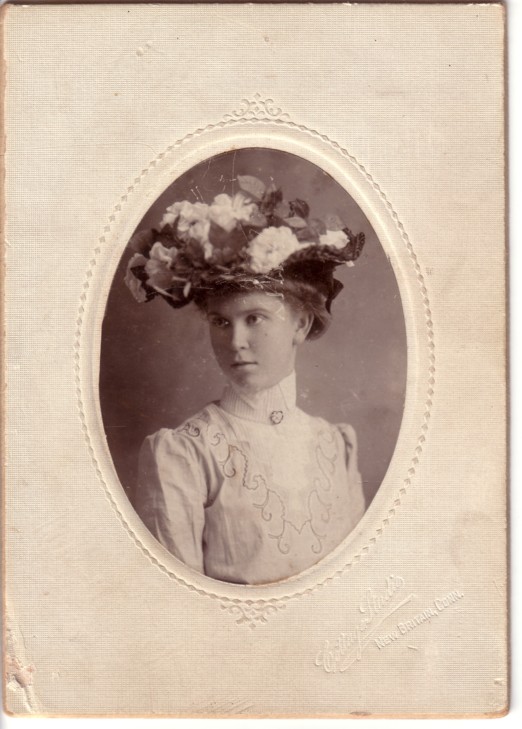
This is the first photo in the book. I orginally thought this picture might have been Mary Fryher’s Wedding Photo to Joseph Charles Sanders. However, they were married in 1886, so this could not be Mary’s wedding photo. The woman in this photo remains a mystery at this point.
The following image is image number 11 within the book.
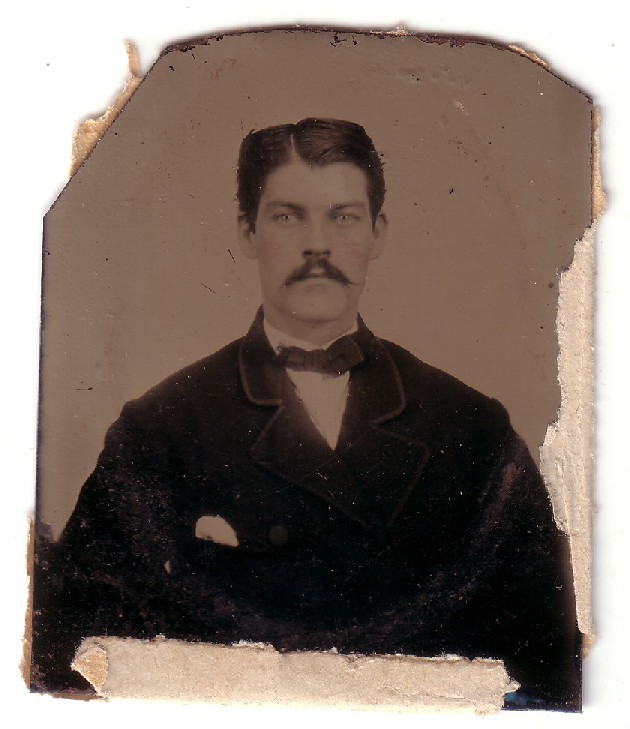
I have not definitively identified this photo, but I suspect the man in the photo above is the same as the man in the photo below. Look closely at the mans facial features. He has a somewhat elongated head and large proturding ears which seem to be consistent.
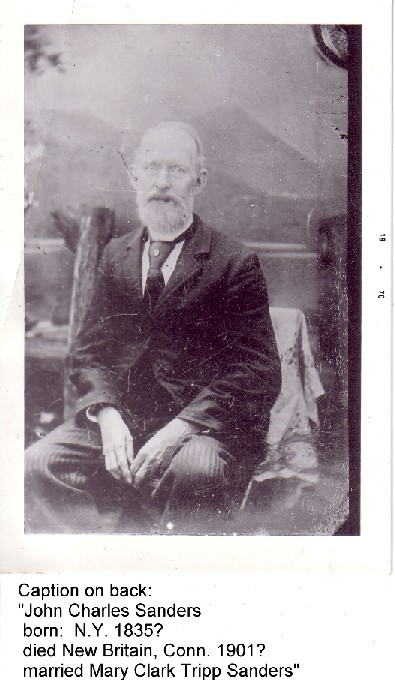
There are a number of websites where you can post your pictures to help date and restore your pictures. One of the best forums I’ve come across is Photo Restoration and Dating at Rootschat . If you have any old photos, check them out.
This is where I will leave the post for this week. On the next two Wednesdays, I will post another unidentified photo from the album in the Wordless Wednesday Post. Next Sunday will be a new topic, but in two weeks on Sunday March, 11, I will post another update on identification of the old photos in this album.
